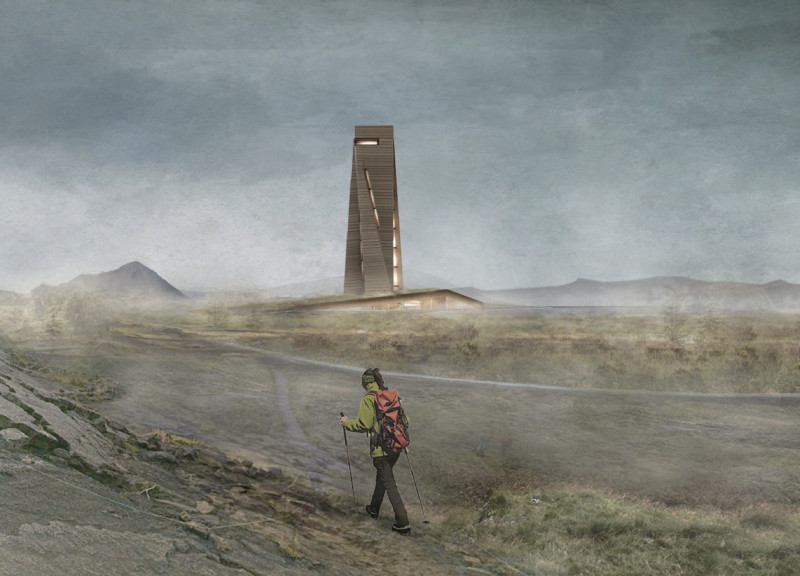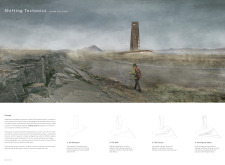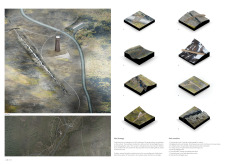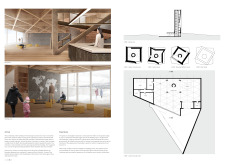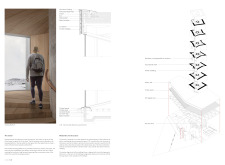5 key facts about this project
The Shifting Tectonics: Iceland Cave Tower is a well-conceived architectural project designed as a visitor center and observation tower in close proximity to the Grjótagjá cave in Iceland. This project integrates into a landscape characterized by volcanic activity and tectonic shifts, reflecting those geological phenomena through its design and function. The tower serves two primary functions: providing an observation deck for panoramic views and offering educational space for visitor engagement regarding the unique geological features of the area.
Architecturally, the project features a dual form comprising a vertical tower and a surrounding earth mound that simulates the natural topography of the site. This integration respects and enhances the landscape while minimizing disruption. The use of cross-laminated timber for the main structure underscores a commitment to sustainability, pairing durability with reduced environmental impact. Concrete is employed for essential structural elements, while steel is utilized for connections and detailing to ensure stability. Aluminum coping is strategically integrated into the roof design, contributing to the building’s contemporary aesthetic.
The design approach emphasizes the dialogue between the structure and the landscape. The angular geometry of the tower mimics the tectonic shifts seen in the surrounding environment. A notable feature is the vertical fissure that allows natural light into the interior while also framing views of the landscape outside. This design choice enhances the visitor experience by providing dynamic sightlines and encourages engagement with the surroundings.
The pathway leading to the entrance is carefully curated to guide visitors through the site, offering various viewpoints and contemplation areas. Inside, the reception area welcomes visitors and serves as a transition zone into the expansive viewing platform above. The interiors are designed to accommodate a variety of functions including informational spaces about the unique geology of Iceland and relaxation zones that allow visitors to absorb the surrounding beauty.
The Shifting Tectonics: Iceland Cave Tower is differentiated from other architectural projects through its responsive design, which is closely linked to the landscape’s geological history. By focusing on materials conducive to the environment and integrating spatial dynamics that highlight both functionality and aesthetic appeal, the project creates a comprehensive experience for visitors.
To explore the architectural plans, architectural sections, architectural designs, and other architectural ideas that define this project, further details can enhance understanding of the innovative approaches taken in its realization. This analysis can serve as a foundation for dialogue on architectural practices in geologically significant contexts, underlining the importance of harmonizing design with its environment.


